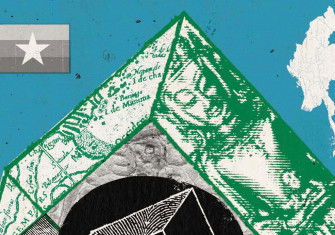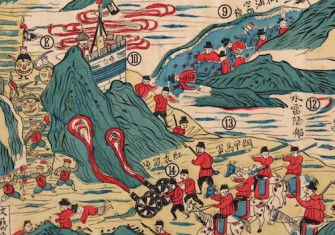The Angkor Empire’s National Health Service
After decades of turmoil, in 1181 Jayavarman VII restored order to the Angkor Empire by embracing Buddhism and introducing an unprecedented public healthcare programme.
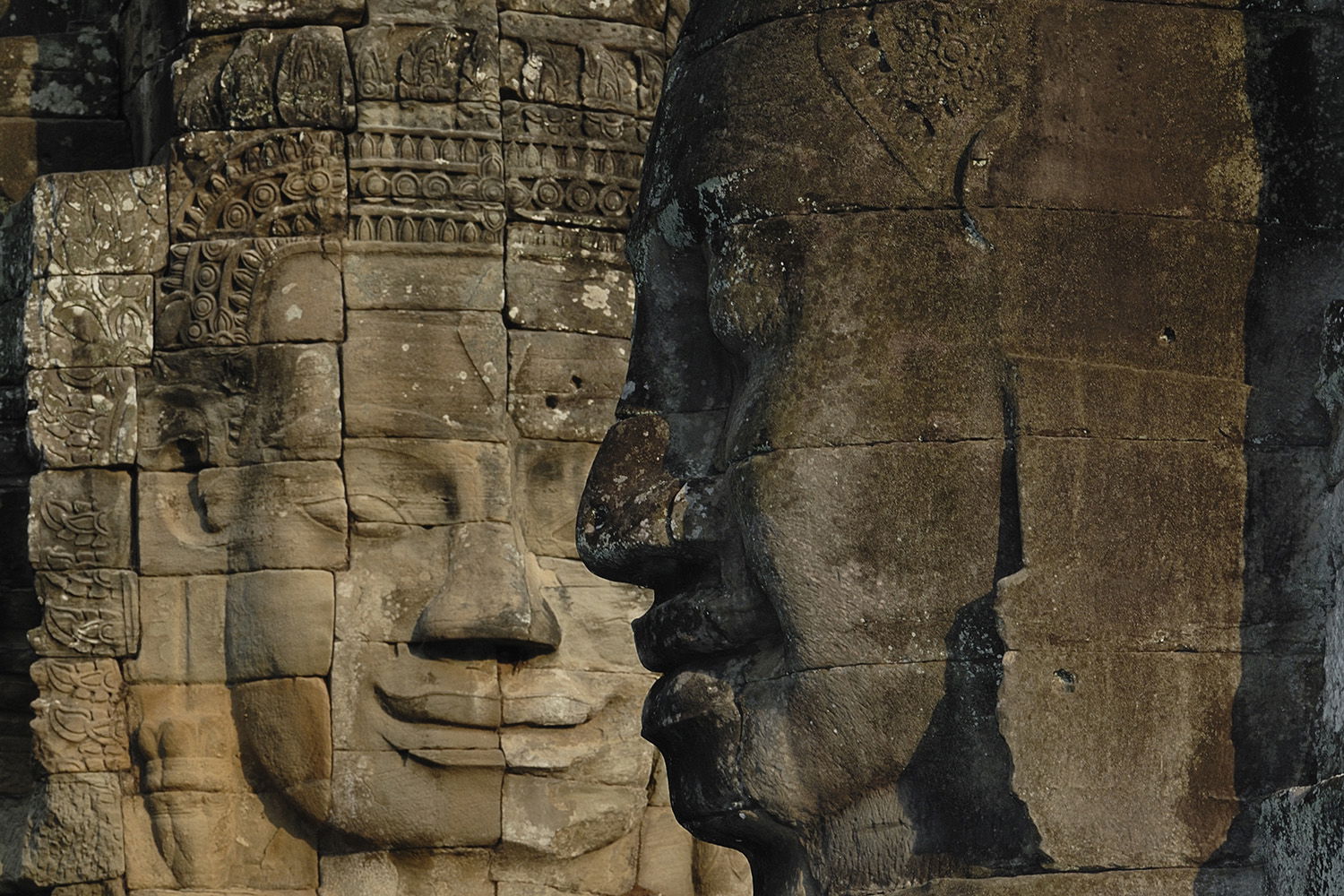
The Bayon temple, Cambodia photographed by Hans Stieglitz 2008.
He suffered the illnesses of his subjects more than his own; because it is the pain of the public that is the pain of kings rather than their own pain.
So reads a 12th-century stele, marking the foundation of a hospital temple near the banks of the Mekong River. The same words were inscribed at multiple hospital temples across the vast Angkorian Empire, which, at its height in the 11th and 12th centuries, covered most of South-east Asia from its centre at Angkor, in present-day Cambodia. The inscription refers to Jayavarman VII, the first Buddhist king of Angkor. While his reign heralded the return of an Angkorian monarch after decades of war and unrest at Angkor, it would also mark the beginning of the end of the empire.
The Angkorian Empire was founded in 802, when Jayavarman II performed a ritual ceremony at Phnom Kulen, a mountain range north of the area that would become Angkor’s capital. According to inscriptions written two centuries after the event, it involved ‘magic rites’ and the installation of an object of ritual significance. This ceremony announced the unification and sovereignty of the Kingdom of Kambuja and, with his magical rites, Jayavarman II instituted the cult of the devarāja, a term commonly translated as ‘god-king’. While the precise meaning of this Sanskrit term is ambiguous, it suggests a cult founded on a strong association between the king and the divine.
Jayavarman VII took the throne of Angkor in 1181/2. Only one dated inscription has been identified from the period between the death of his predecessor Suryavarman II (Jayavarman VII’s cousin and the builder of Angkor Wat) in c.1150, and 1182, meaning details of events during Jayavarman VII’s early adulthood are unclear. Epigraphy indicates he belonged to a royal dynasty that had ruled over Angkor in the preceding century and that he spent his early life in exile. Prior to his coronation there were multiple contenders to the throne from competing dynasties.
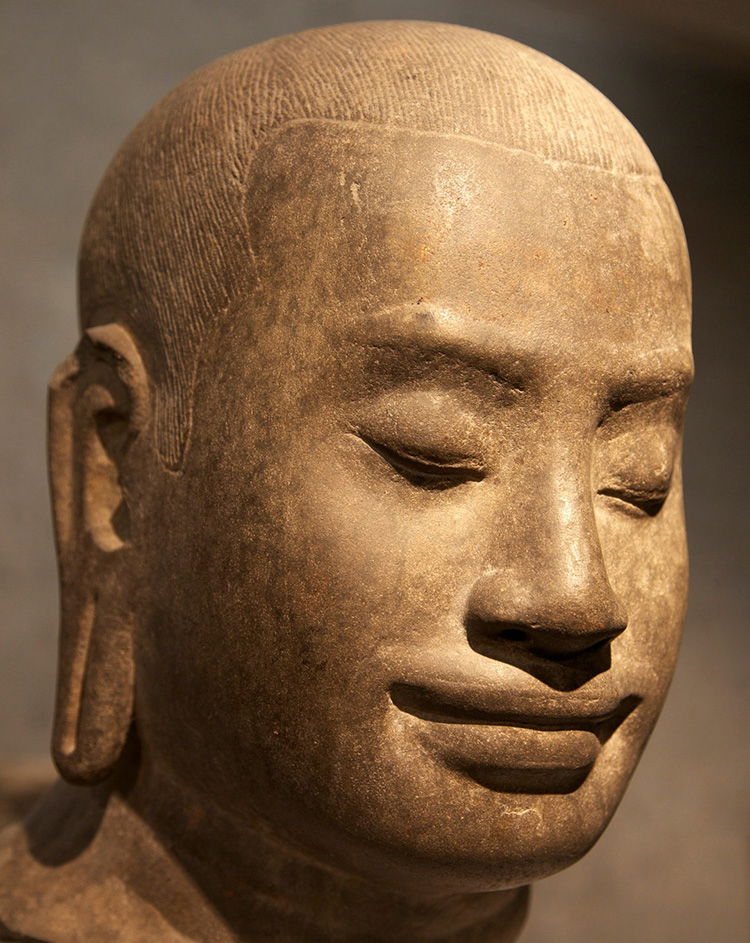
Today, the Angkorian Empire is best known for its monumental Hindu temples, built by successive kings to associate themselves with the divine through architectural imitations of the heavenly realms. These temples are concentrated in Angkor, but are also scattered across Cambodia, Thailand, Vietnam and Laos. Angkorian kings maintained their legitimacy and secured their legacy through the process of temple-building; the maintenance of religious complexes was considered a crucial means of upholding symbolic order. But the construction and upkeep of such temples required a large population. For example, the vast temple complex of Ta Prohm (founded in 1186) was supported by hundreds of villages and their 80,000 residents. Recent research suggests that Angkor was probably the largest urban metropolis in the pre-industrial world. Rulers needed to balance divine concerns and power struggles with social policies that catered for the mundane needs of the populace.
Jayavarman VII was an accomplished warrior who fought his way to the throne after years of warfare and turmoil, during which Angkor was invaded by armies from neighbouring Champa. His conquests are documented on the bas-reliefs at the Bayon temple, which depict battles between Angkorian and Cham armies. These carvings reveal that Jayavarman’s kingship put an end to a period of civil unrest and that his court strove to assert their power by returning order and prosperity to the population. The recovery of the capital necessitated a re-establishment of faith in the institution of kingship as well as policies that would bolster support.
Jayavarman VII had much in common with previous Angkorian monarchs, but his change of state religion – from Hinduism to Buddhism – marked a significant development. From the outset, Angkor appears to have been religiously tolerant; Hinduism and Buddhism co-existed peacefully for centuries, along with various animist beliefs. But it was to the Brahmānic deities Śiva and Viṣṇu that kings paid homage. Jayavarman VII’s shift to Mahāyāna Buddhism appears to have substituted the cult of the devaraja for the cult of the king-as-Buddha, or buddharāja, while also retaining the worship of Brahmanic deities. The precise reasons for the elevation of Buddhism remain unclear. It is possible that the disruption at Angkor had weakened belief in the power of the god-king cult, requiring a reimagining of the structures of royal power.
Like other Angkorian kings, Jayavarman VII consecrated temples to honour and deify his parents, albeit on an unprecedented scale. In 1186, Ta Prohm temple was dedicated to his mother. He dedicated Preah Khan temple to his father in 1191. The Bayon was the king’s own state temple and its central shrine housed a large statue of a Buddha. These three temples form an architectural triad, which symbolises the Mahāyāna Buddhist notion that out of the union of wisdom and compassion comes enlightenment, with the Buddha identified with the king himself.
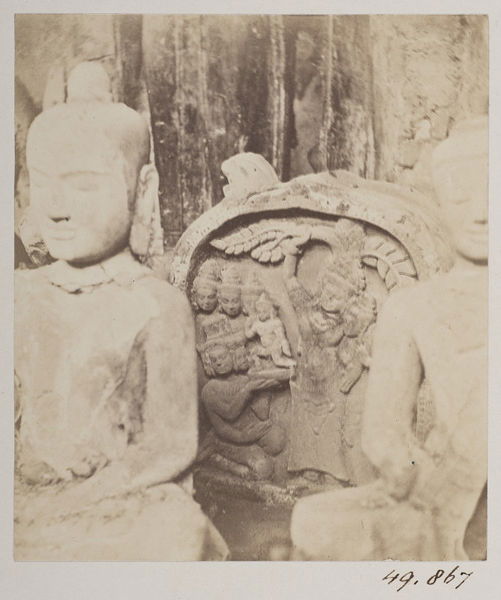
But Jayavarman VII also demonstrated his association with Buddhist kingship through virtuous public works, the construction of which increased significantly during his reign. He built roads, bridges and rest-houses, the latter evenly spaced at 15km intervals along the main roads. These served the population, but also enabled the king to deal with uprisings outside the capital as well as to further open overland trade routes.
It is in the arena of public health, however, that Jayavarman VII’s public welfare programme was most distinctive. Medical knowledge had a long history in Cambodia, but what can perhaps be understood as state-sponsored healthcare, well-supported by royal donations, only appears to emerge in the 12th century.
The largest curative establishment is the temple complex of Neak Pean, built at the centre of a large, man-made reservoir. Constructed during the reign of Jayavarman VII, it is only accessible by boat and consists of a quincunx of ponds and a central temple shrine. The central pond is thought to represent the mythical lake Anavatapta, said to be located in the Himalayas, the waters of which are thought to cure all illness. The creation of Lake Anavatapta at Angkor enabled the king to strengthen his association with the Buddha.
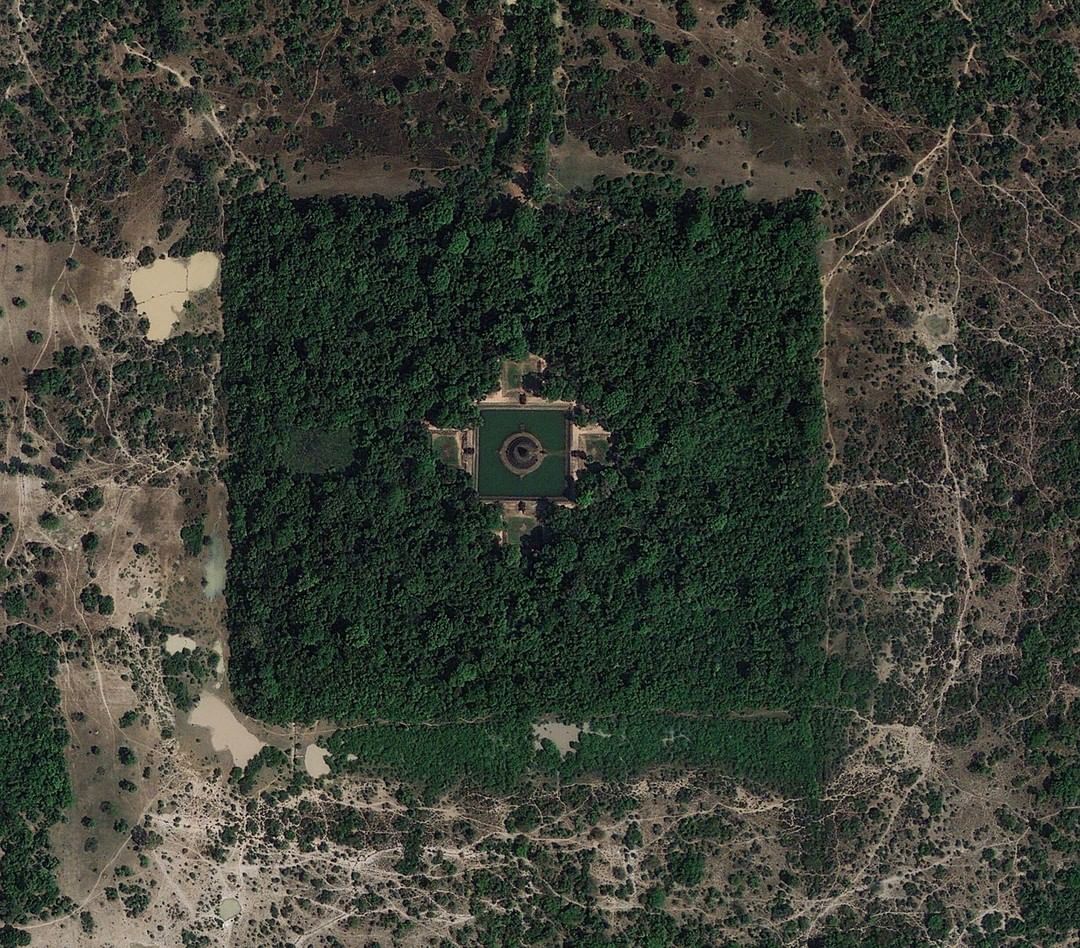
Along with this central ‘hospital’ temple, inscriptions state that Jayavarman VII founded an additional 102 hospitals. These were probably open to all, although how such care was paid for is unknown. People may have had to make a donation, but it is possible that healthcare was offered without charge. Each hospital would have contained a shrine to Bhaisajyaguru, the Buddha of medicine and healing. Before entering Buddhahood, Bhaisajyaguru made a vow to help the physical and mental health of all living beings. The hospital edicts state that just hearing the name Bhaisajyaguru was enough to cure all ills.
In addition to ritual and spiritual healthcare, these hospitals also offered healing in a manner more akin to ‘modern’ medicine. The inscriptions give an inventory of staff and supplies. Each hospital was home to achar – priests – and a large team of medical workers, including two doctors, two apothecaries, eight nurses and six assistants. There were also guards, cooks, rice-makers and servants. The medical team offered diagnostic testing, most likely by reading the pulse.
The hospitals also prescribed medicines, including honey, butter, oil and molasses. It is highly probable that medical alchemy formed a large part of the healthcare service at Angkor. An inscription at Ta Prohm temple lists royal donations of metals and apparatus that would have been used for alchemy, including mercury sulfide and a gold cauldron.
Evidence of these medical practices are found in the diary of Zhou Daguan, a Chinese envoy who visited Angkor in the 13th century. In his vivid account of daily life at Angkor, he wrote that mercury and sulphur were imported from China. He also recorded that people cured disease by ‘plunging into water and repeatedly washing the head’, the kind of curative treatment perhaps offered at Neak Pean.
Why was Jayarvarman VII so concerned with public health? It is possible that his court was responding to an urgent need, for example an outbreak of disease or epidemic that threatened the stability of the region. Such programmes would have also helped consolidate political power and increase loyalty towards him, important considerations for a leader unifying an empire after years of war. But most significantly, Jayavarman’s concern for easing the suffering of his people fulfilled the role of the protective and compassionate Buddhist monarch. As a Buddhist, Jayavarman VII knew that his altruism towards the physical and mental well-being of the population would accumulate great karmic merit for himself and for his kingdom. These hospitals may have also helped to convert the population to Buddhism.
By publicly recording such acts in inscriptions, Jayavarman exhorted his successors to follow in his lead. Another inscription reads:
Filled with a deep sympathy for the good of the world, the king swore this oath: ‘All beings who are plunged in the ocean of existence, may I draw out by virtue of this good work. And may the kings of Cambodia who come after me, attached to goodness … attain with their wives, dignitaries and friends the place of deliverance where there is no more illness.
Yet Jayavarman VII was to be the last of the great Angkorian monarchs. The empire’s territory shrank as neighbouring polities became more powerful. By the end of the 15th century, the royal capital had moved south, closer to the Mekong Delta. Reasons for this relocation are multiple: possible drought meaning that the hydraulics Angkor relied on failed, an increase in maritime trade and more frequent incursions into Angkor by the Siamese among them. But the temples of Angkor were never abandoned or forgotten; they have been continually inhabited by lay persons and monastic communities. Angkor also remained religiously and politically significant, with kings returning to perform ceremonial rites to the present day. These rituals ensure the prosperity of Cambodia, a nod to the vows of Jayavarman VII’s 12th-century inscriptions, even as universal state-sponsored healthcare faded from the picture.
Joanna Wolfarth is a cultural historian, lecturer and writer.



